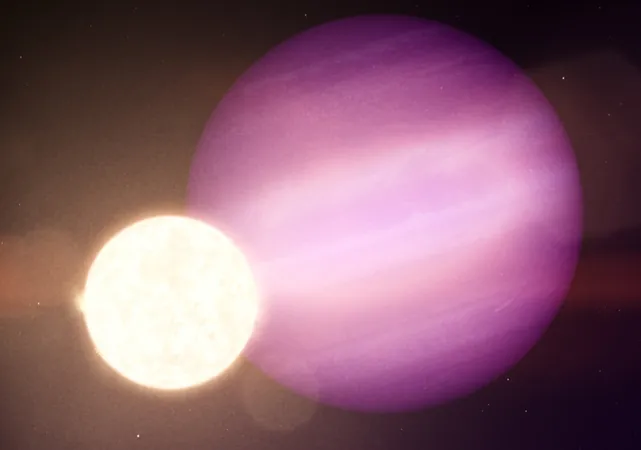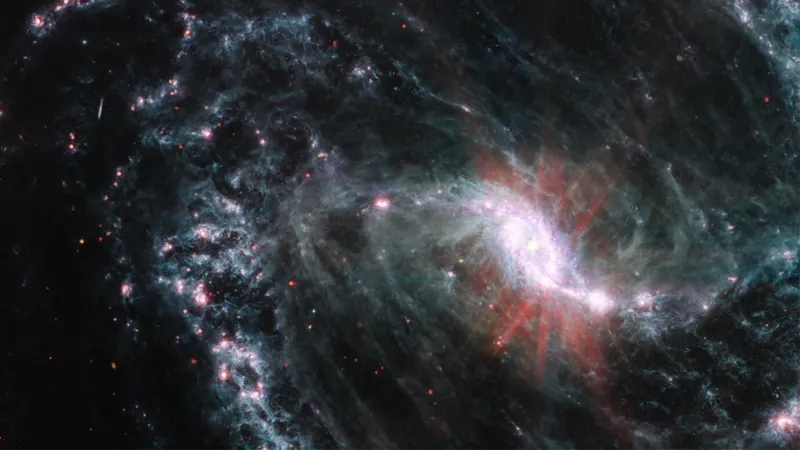
Astronomers Confirm Coldest Exoplanet Yet—A Unique Planet Orbiting a White Dwarf!
2025-04-30
Author: Jacques
Meet the Coldest Exoplanet Ever Discovered!
Astronomers have made an astounding breakthrough, confirming that WD 1856+534 b is the coldest exoplanet ever observed. This gas giant, roughly six times the mass of Jupiter and classified as a "super-Jupiter," orbits a white dwarf star located about 81 light-years from Earth.
Groundbreaking Research from the James Webb Space Telescope
In an exciting new study led by Mary Anne Limbach from the University of Michigan, an international team of scientists utilized the Mid-Infrared Instrument (MIRI) aboard the James Webb Space Telescope (JWST). Their observations not only confirmed the planet's chilling average temperature of 186 K (-87°C/-125°F) but also provided crucial insights about its mass and atmosphere.
Unlocking the Secrets of Exoplanets and Their Environments
The JWST aims to unveil the mysteries of exoplanets by characterizing them through advanced infrared optics. This involves analyzing the light reflected from a planet’s surface to identify potential biosignatures like oxygen, water, and methane—elements that could indicate life beyond Earth!
Why White Dwarfs Are Game-Changers for Astronomy
White dwarfs offer a unique opportunity for astronomers. Their low luminosity diminishes the overwhelming light that typically obscures exoplanet observations, enabling scientists to study planets that might otherwise remain hidden. The findings about WD 1856+534 b reveal vital information on how planetary systems survive the late stages of stellar evolution.
Exciting Future Explorations Await!
Looking ahead, the team is excited for more observations in 2025, hoping to uncover additional planetary companions and their dynamics. The results from earlier observations made with Webb’s Near-Infrared Spectrometer (NIRSpec) are also on the horizon, promising further revelations regarding the intriguing atmosphere of this unique exoplanet.
A Glimpse into Our Cosmic Future?
As researchers continue to explore the mysteries of WD 1856+534 b, questions linger about the fate of planetary systems after a star's death. Can planets maintain habitable conditions around white dwarfs? The answers may soon be at our fingertips as the James Webb Space Telescope ventures deeper into the cosmos, bringing us one step closer to understanding life beyond our solar system!









 Brasil (PT)
Brasil (PT)
 Canada (EN)
Canada (EN)
 Chile (ES)
Chile (ES)
 Česko (CS)
Česko (CS)
 대한민국 (KO)
대한민국 (KO)
 España (ES)
España (ES)
 France (FR)
France (FR)
 Hong Kong (EN)
Hong Kong (EN)
 Italia (IT)
Italia (IT)
 日本 (JA)
日本 (JA)
 Magyarország (HU)
Magyarország (HU)
 Norge (NO)
Norge (NO)
 Polska (PL)
Polska (PL)
 Schweiz (DE)
Schweiz (DE)
 Singapore (EN)
Singapore (EN)
 Sverige (SV)
Sverige (SV)
 Suomi (FI)
Suomi (FI)
 Türkiye (TR)
Türkiye (TR)
 الإمارات العربية المتحدة (AR)
الإمارات العربية المتحدة (AR)